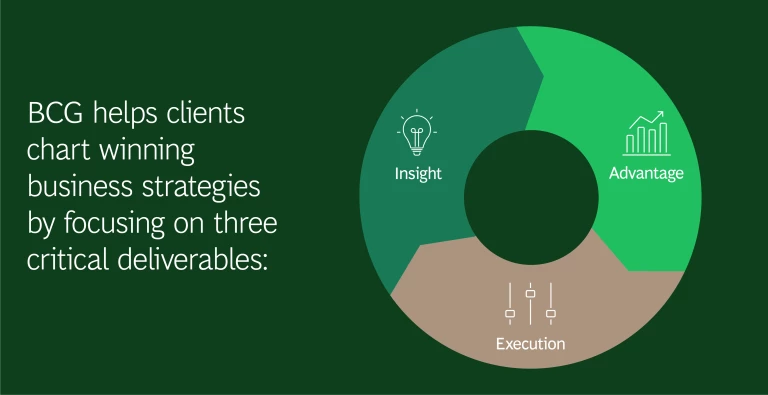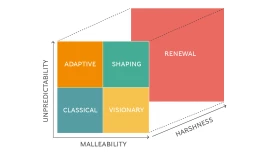How We Help Business Strategy Clients
A business only prospers if it can satisfy the changing needs of its customers both more fully and more profitably than its competitors. Today, with digital disruption blurring industry boundaries and geopolitics challenging long-held assumptions, companies must continuously refresh their business growth strategy to keep up. Adding to the complexity is the fact that different strategic environments call for different types of business strategies.

- Rich Insight into the Strategic Environment. How are the priorities and options of leading-edge customers changing? Where are today’s profit pools, and how are they likely to evolve or be disrupted? How well are competitors, whether traditional or emerging, positioned to respond? Which combination of choices on where to play—by customers, markets, and investments—has the greatest potential to create value relative to rivals and improve business unit strategy?
- A Candid Assessment of the Business’s Real Competitive Advantages. What factors—for example, cost, capabilities, intellectual property, unique access to data, or position in an ecosystem—are at the heart of the business unit’s right to win? Are key moves required to acquire new assets or capabilities that are essential to future advantage?
- A Direct and Agile Connection Between Strategy and Execution. What’s the best way to create alignment around the business unit strategy? To set and communicate goals? To create tight market feedback loops that enable rapid learning and adaptation while also ensuring programmatic rigor in execution?
BCG began as a business strategy consultant, and throughout the evolution of business strategy, BCG has remained a leader. We have helped clients define and execute their business growth strategy across markets, industries, and transformation timelines.
BCG’s Client Work in Business Strategy
Our Featured Solutions and Resources

Digital Strategy
Digital Strategy

The Strategy Palette
The Strategy Palette
Our Insights on Business Strategy












